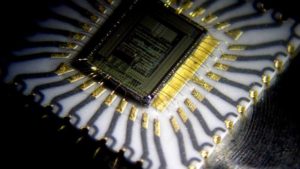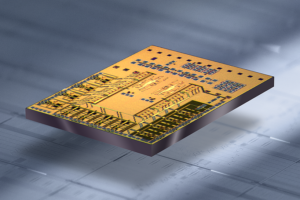Crack Microcontroller ATmega1280 Heximal
Crack Microcontroller ATmega1280 flash and eeprom memory, turn the status of MCU from locked to unlocked one, locate the security fuse bit through reverse engineering Microprocessor and extract MCU’s circuitry pattern.

Crack Microcontroller ATmega1280 flash and eeprom memory, turn the status of MCU from locked to unlocked one, locate the security fuse bit through reverse engineering Microprocessor and extract MCU’s circuitry pattern
The ATMEGA1280 has three lock bits that can be left unprogrammed (U) or can be programmed (P) to obtain the additional features listed in the following table.
When lock bit 1 is programmed, the logic level at the EA pin is sampled and latched during reset. If the device is powered up without a reset, the latch initializes to a random value and holds that value until reset is activated if microchip PIC16F685 flash breaking.
The latched value of EA must agree with the current logic level at that pin in order for the device to function properly. Once programmed, the lock bits can only be unprogrammed with the Chip Erase operations in either the parallel or serial modes.
Atmel’s ATMEGA1280 Flash Microcontroller offers 12K bytes of in-system reprogrammable Flash Code memory. The ATMEGA1280 is normally shipped with the on-chip Flash Code memory array in the erased state (i.e. contents = FFH) and ready to be programmed.
This device supports a High-Voltage (12V) Parallel programming mode and a Low-Voltage (5V) Serial programming mode. The serial programming mode provides a convenient way to download the ATMEGA1280 inside the user’s system.
The parallel programming mode is compatible with conventional third party Flash or EPROM programmers. The Code memory array occupies one contiguous address space from 0000H to 2FFFH if microchip ic pic16f687 firmware unlocking.
The Code array on the ATMEGA1280 is programmed byte-by-byte in either programming mode. An auto-erase cycle is provided with the self-timed programming operation in the serial programming mode. There is no need to perform the Chip Erase operation to reprogram any memory location in the serial programming mode unless any of the lock bits have been programmed. In the parallel programming mode, there is no auto-erase cycle. To reprogram any non-blank byte, the user needs to use the Chip Erase operation first to erase the entire Code memory array.
Tags: crack microcontroller archive,crack microcontroller binary,crack microcontroller code,crack microcontroller content,crack microcontroller data,crack microcontroller eeprom,crack microcontroller file,crack microcontroller firmware,crack microcontroller heximal,crack microcontroller information,crack microcontroller memory,crack microcontroller program


